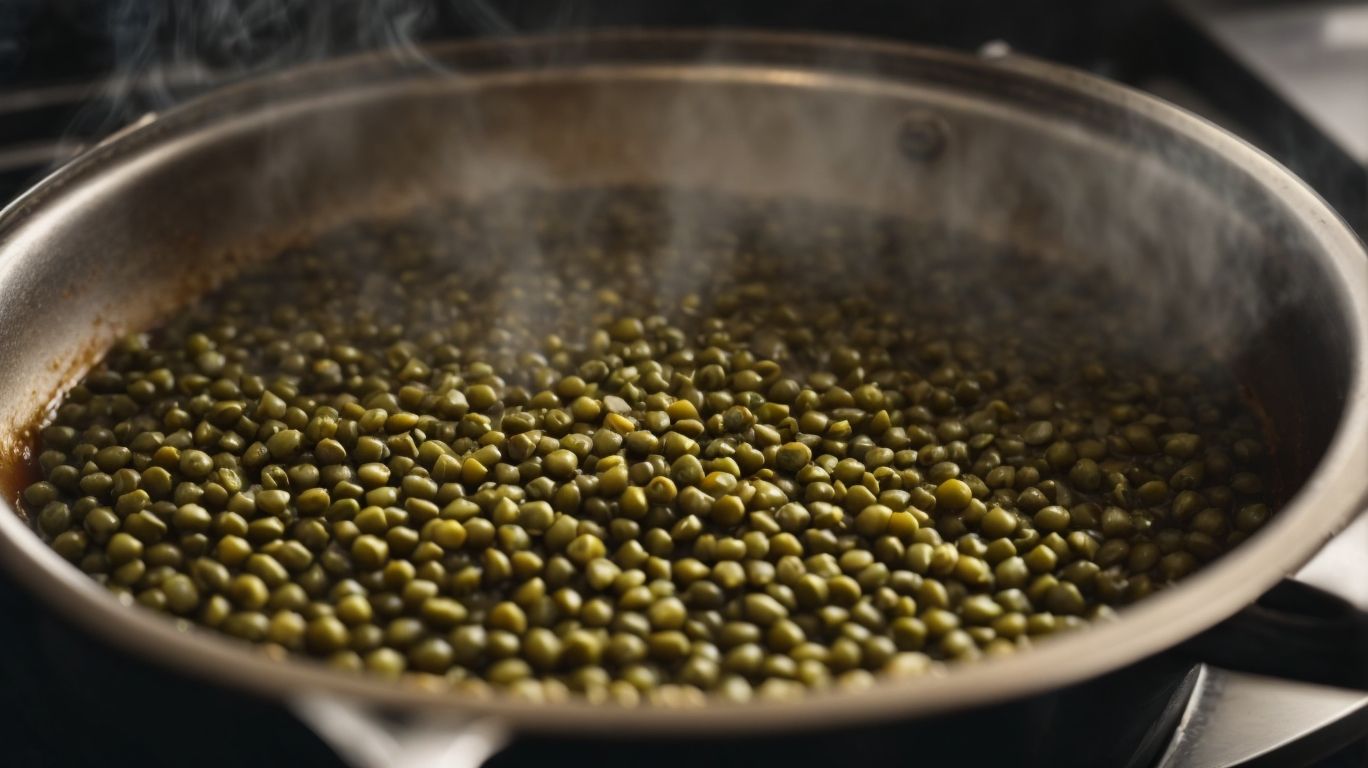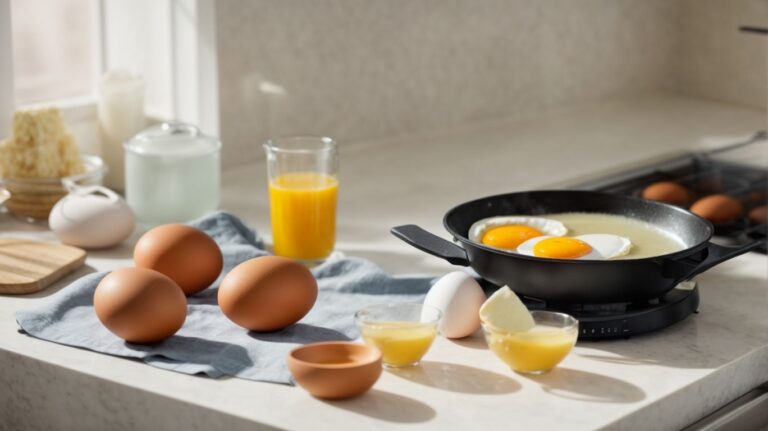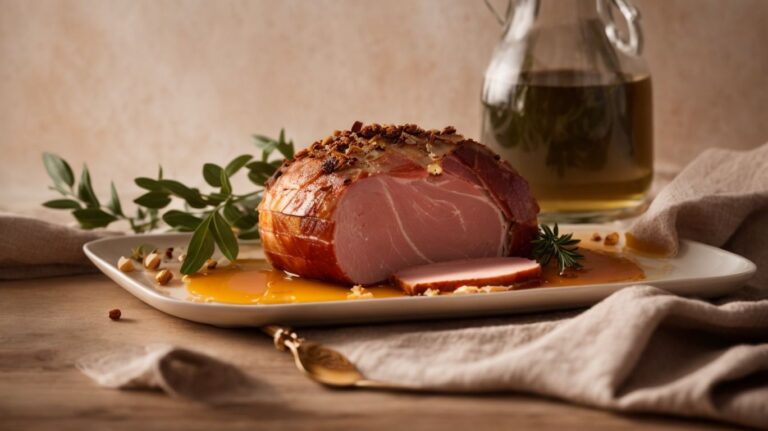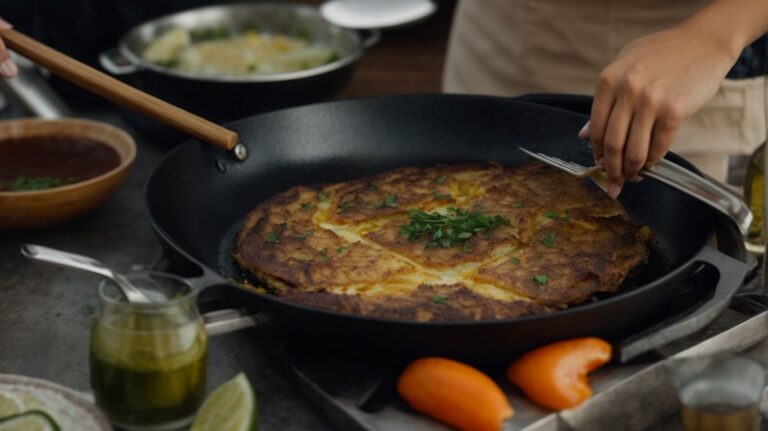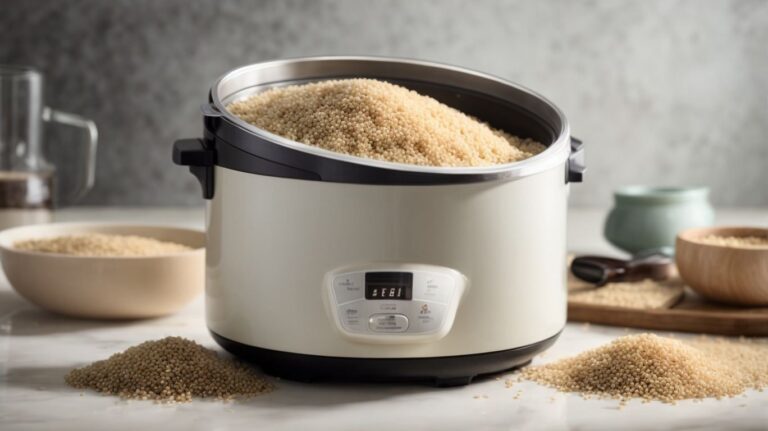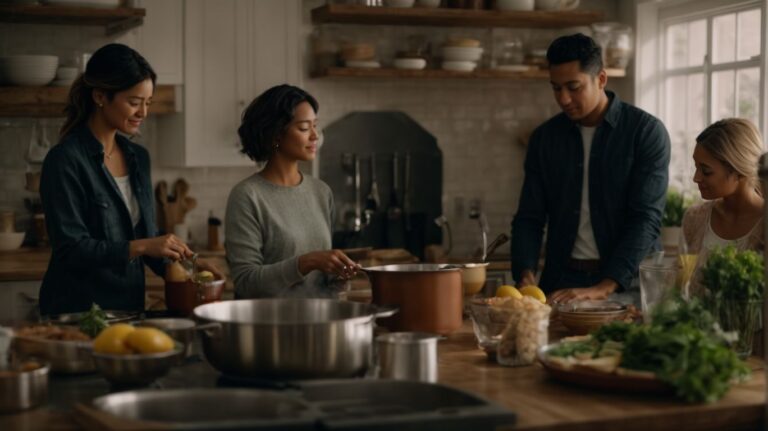How to Cook Dried Peas Without Soaking?
Are you a fan of dried peas but unsure about the soaking process? Look no further!
In this article, we will explore the ins and outs of cooking dried peas without soaking. From the benefits of soaking to handy tips and delicious recipes, we’ve got you covered.
Whether you’re a seasoned chef or a novice in the kitchen, there’s something here for everyone. So, let’s dive in and discover the secrets to perfectly cooked dried peas!
Key Takeaways:
What Are Dried Peas?
Dried peas are legumes that are a versatile and nutritious ingredient used in a variety of culinary creations.
These small but mighty legumes are packed with essential nutrients like fiber, protein, vitamins, and minerals, making them a great addition to a balanced diet. From soups and stews to salads and dips, dried peas can be incorporated into numerous dishes, adding a rich flavor and a creamy texture.
One of the key health benefits of dried peas is their ability to support digestive health due to their high fiber content, which aids in promoting regular bowel movements and maintaining gut health. They are a good source of plant-based protein, making them an excellent option for vegetarians and vegans.
Why Soak Dried Peas?
Soaking dried peas before cooking offers numerous health benefits and enhances the process of preparing them for consumption.
When you soak dried peas, it helps reduce the phytic acid content, making the nutrients more bioavailable for your body to absorb. This process also aids in softening the peas, reducing the cooking time and ensuring they cook more evenly. Soaking dried peas can help improve their digestibility, reducing the chances of bloating or digestive discomfort that some people may experience when consuming unsoaked legumes.
What Are the Benefits of Soaking Dried Peas?
Soaking dried peas enhances their nutritional profile by increasing the bioavailability of essential nutrients like fiber, protein, and vitamins.
This process not only helps in breaking down the complex carbohydrates present in peas, making it easier for the body to absorb the nutrients, but it also improves their digestibility, reducing the chances of bloating or digestive discomfort.
Soaking dried peas can enhance their flavor retention, resulting in a more delicious and appetizing dish when cooked. By allowing the peas to rehydrate in water, you are essentially revitalizing them, ensuring that you get the most out of their nutritional value.
How to Cook Dried Peas Without Soaking?
Cooking dried peas without soaking can be achieved using various methods such as stovetop cooking, pressure cooking, or slow cooking.
When opting for stovetop cooking, start by adding the dried peas to a pot with water, ensuring they are fully submerged. Bring the peas to a boil, then reduce the heat to a simmer and cover the pot. Let them cook for about 45-60 minutes, or until they are tender but not mushy.
For pressure cooking, place the peas in the cooker with water and any desired seasonings, set the timer for around 10-15 minutes, depending on the variety of peas.
Slow cooking involves placing the peas in a slow cooker with enough water, seasonings like garlic and bay leaves, and letting them cook on low for 6-8 hours, until they reach the desired consistency.
Step 1: Rinse the Dried Peas
The first step in cooking dried peas without soaking is to thoroughly rinse them under running water to remove any debris or impurities.
Rinsing the dried peas is crucial as it helps in reducing dirt, dust, or any unwanted particles that may have collected during storage. Water plays a vital role in this process, ensuring that the peas are clean and ready for cooking. Make sure to use a fine-mesh strainer or colander to rinse them thoroughly, allowing the water to flow through and carry away any dirt. You may need to repeat the rinsing process a few times until the water runs clear, signaling that the peas are clean.
Step 2: Boil the Dried Peas
After rinsing, boil the dried peas in a pot of water until they reach a rolling boil, then reduce the heat to simmer and continue cooking.
Boiling dried peas is a crucial step in ensuring they reach the desired tenderness and flavor. Once the peas start to simmer, cover the pot partially to allow steam to escape and prevent boil-overs. Keep a close eye on the peas, occasionally stirring to ensure even cooking and to prevent sticking. The simmering process helps the peas slowly break down, resulting in a creamy texture and a rich taste. It’s essential to taste-test the peas periodically to check for the desired tenderness – they should be soft but still hold their shape without turning mushy.
Step 3: Simmer the Dried Peas
Simmering the boiled dried peas allows them to absorb flavors from herbs and seasonings, enhancing the overall taste of the dish.
Infusing flavor into dried peas through simmering is a key step in elevating the culinary experience. By gently cooking the peas in a seasoned broth, the herbs and spices release their essence, infusing the legumes with a rich depth of taste. This slow cooking process not only enhances the aroma of the peas but also softens their texture, making each bite a burst of savory delight. To maximize the impact, consider adding a variety of herbs and spices such as thyme, rosemary, garlic, or cumin, tailored to complement your dish.
Step 4: Add Seasonings and Ingredients
To enhance the taste of cooked dried peas, add seasonings like salt, pepper, and herbs to elevate the flavor profile.
Experimenting with different flavor combinations can take your peas to the next level. Consider adding a dash of paprika for a smoky kick or some garlic powder for a savory boost.
- For a fresh and zesty touch, squeeze some lemon juice over the peas before serving.
- Try sprinkling parmesan cheese or nutritional yeast for a cheesy umami flavor.
- A pinch of cumin can add earthy warmth to the dish.
What Are Some Tips for Cooking Dried Peas Without Soaking?
For efficient cooking, consider using a pressure cooker or Instant Pot when preparing dried peas without soaking to save time and energy.
When cooking dried peas without soaking, using a pressure cooker or Instant Pot can significantly reduce the cooking time. The high pressure within these appliances helps to break down the peas quickly, resulting in a faster cooking process. The sealed environment helps to retain the flavors and nutrients of the peas, ensuring a delicious and nutritious outcome.
To ensure the peas are cooked to perfection, refer to the specific cooking times recommended for dried peas in your pressure cooker or Instant Pot manual. The cooking times may vary depending on the type of peas and the specific model of your appliance, so it’s essential to follow the instructions provided.
Tip 1: Use a Pressure Cooker
Utilizing a pressure cooker can significantly reduce the cooking time for dried peas, making them tender and flavorful in a fraction of the usual time.
One of the main advantages of using a pressure cooker for cooking dried peas is the remarkable time efficiency it offers. With its high-pressure environment, a pressure cooker can speed up the cooking process, drastically reducing the usual hours needed to simmer peas on a stovetop.
The flavor retention in peas cooked in a pressure cooker is outstanding. The sealed environment of the cooker helps in preserving the natural flavors and nutrients of the peas, resulting in a richer and more intense taste.
Tip 2: Add Baking Soda to Speed Up Cooking Time
Adding a pinch of baking soda to the cooking water can expedite the softening process of dried peas, reducing the overall cooking time.
When baking soda is added to the cooking water of dried peas, it raises the pH level, making the water more alkaline. This pH change helps to break down the peas’ cell walls more quickly, allowing them to soften faster during the cooking process. As a result, the peas become tender in a shorter amount of time, saving you valuable minutes in the kitchen.
Tip 3: Use a Slow Cooker for Convenience
Employing a slow cooker allows for convenient and hands-off cooking of dried peas, making it a perfect option for busy individuals who prefer advance planning.
When using a slow cooker for dried peas, you can simply add the peas, water or broth, and seasonings into the pot, set the timer, and let it work its magic. This method eliminates the need for soaking the peas overnight, saving you time and effort. The slow cooking process helps to retain the natural flavors and nutrients of the peas, resulting in a delicious and healthier dish. You can prep the ingredients in the morning, set the slow cooker, and return in the evening to a warm and comforting meal ready to be enjoyed.
How to Tell When Dried Peas Are Fully Cooked?
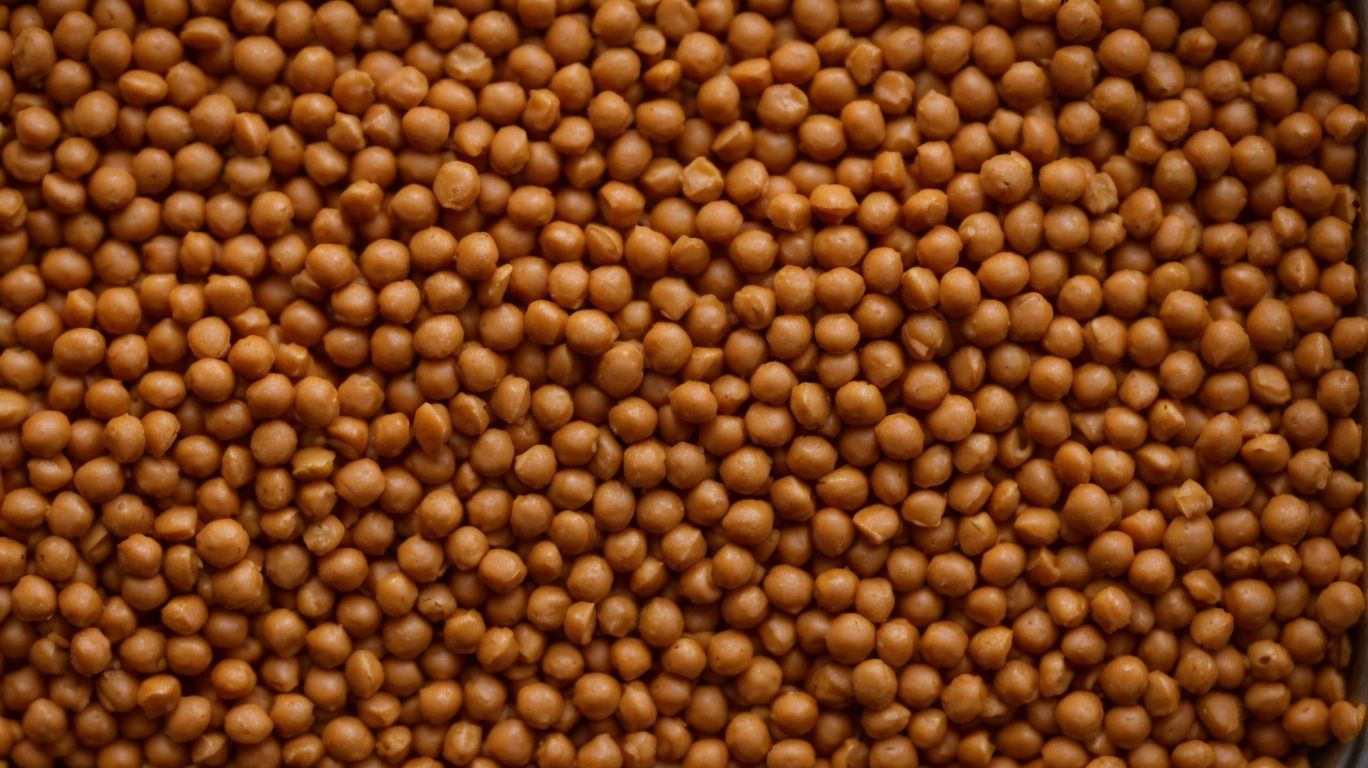
Credits: Poormet.Com – Philip Perez
Dried peas are fully cooked when they are tender to the bite and have absorbed the flavors of the cooking liquid, indicating readiness for consumption.
When checking for tenderness, you should aim for a texture that is soft yet slightly firm, ensuring that the peas are not too mushy or crunchy. One way to test this is by pressing a pea between your fingers – it should easily squash with a slight resistance. The peas should have a uniform consistency throughout, showing that they have cooked evenly. Allow the peas to simmer gently until this desired consistency is achieved, typically taking around 30-45 minutes.
What Are Some Delicious Recipes Using Dried Peas?
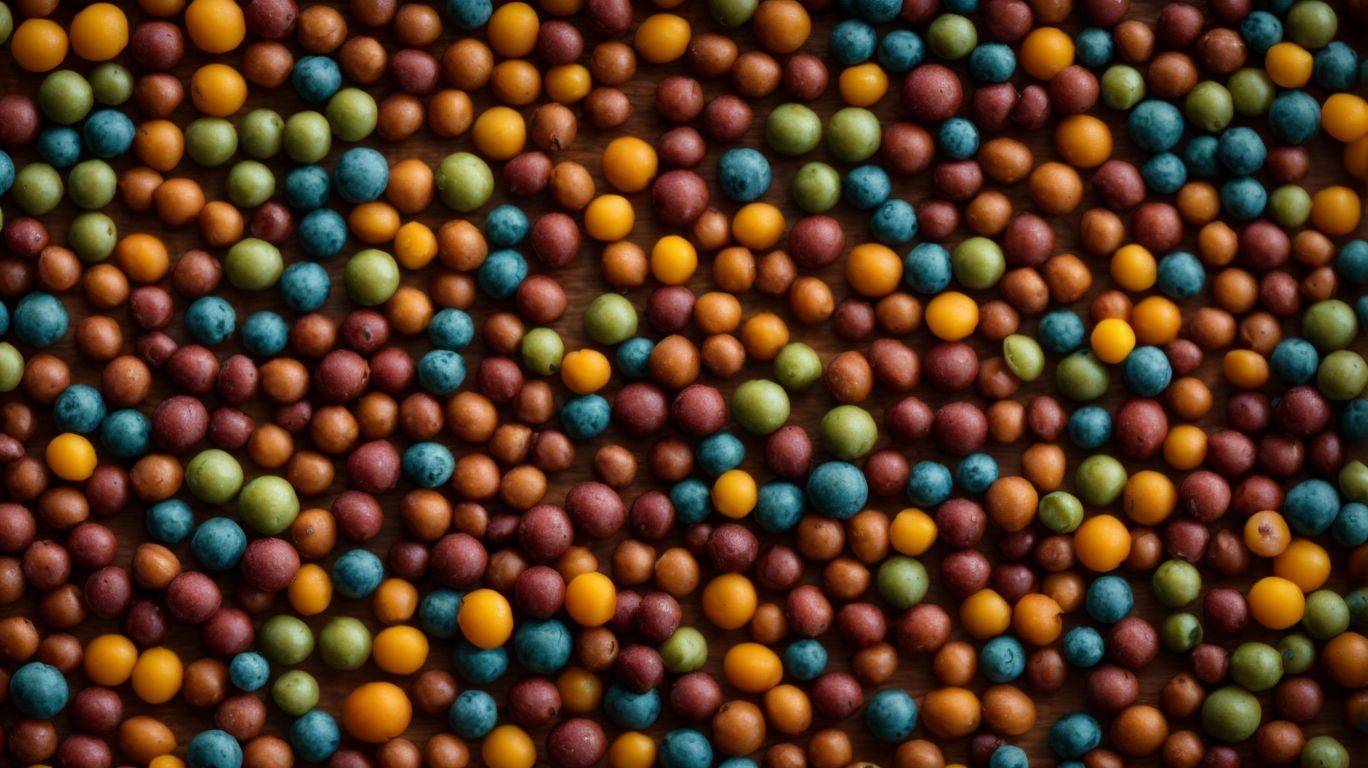
Credits: Poormet.Com – Kyle Miller
Dried peas can be used in a variety of delicious recipes, including hearty salads, comforting soups, and flavorful stews.
Adding dried peas to your dishes not only brings a satisfying texture but also adds a boost of plant-based protein and fiber. In salads, they provide a crunchy element that pairs well with fresh vegetables and tangy dressings, creating a nutritious and filling meal.
In terms of soups, dried peas absorb the flavors of the broth and vegetables, resulting in a delightful medley of tastes. This ingredient can also elevate stews by adding a rich earthiness and thickening the sauce naturally. Whether you prefer a light summer salad or a hearty winter stew, recipes featuring dried peas offer versatility and depth of flavor.
Recipe 1: Split Pea Soup
A classic Split Pea Soup recipe combines dried peas, flavorful broth, and aromatic seasonings for a comforting and nutritious dish.
To start, rinse a cup of dried split peas thoroughly to remove any debris. Then, in a large pot, heat some olive oil over medium heat and sauté diced onions, carrots, and celery until softened. Next, add the split peas along with vegetable or chicken broth, bringing the mixture to a simmer.
Season generously with salt, pepper, and a bay leaf for enhanced flavor. Let the soup simmer gently for about an hour, stirring occasionally to prevent sticking. The split peas will gradually soften and create a rich, creamy texture.
For a heartier version, consider adding diced ham or smoked sausage towards the end of cooking. Garnish each bowl with fresh parsley and a drizzle of olive oil before serving. This Split Pea Soup is not only delicious but also an excellent source of fiber and protein.”
Recipe 2: Pea and Ham Risotto
Pea and Ham Risotto is a savory dish that combines dried peas, tender ham, and a hint of black pepper, all cooked to perfection in an Instant Pot for ease and convenience.
To start this delightful recipe, begin by sautéing onions and garlic in olive oil in your Instant Pot on the sauté mode. The fragrance of the onions mixing with the garlic is a true indication that your risotto is on its way to becoming a flavorful masterpiece.
Once the onions are translucent, add the dried peas, chopped ham, and Arborio rice to the pot. Let the ingredients mingle and toast a bit before adding in the black pepper for that extra kick of flavor.
Recipe 3: Indian-Style Split Pea Curry
An Indian-Style Split Pea Curry features aromatic spices, tender split peas, and a rich sauce that highlights the flavors of traditional Indian cuisine.
One of the key elements in creating this flavorful dish is the use of dried split peas, which bring a hearty texture and earthy taste to the curry. These peas are simmered to perfection, absorbing all the delicious flavors of the spice blend that includes cumin, coriander, turmeric, and garam masala.
The aromatic combination of these spices infuses the dish with warmth and depth, while the addition of fresh ginger and garlic provides a zesty kick that elevates the overall flavor profile.
Frequently Asked Questions
How to Cook Dried Peas Without Soaking?
What are the benefits of cooking dried peas without soaking?
How do I adjust the cooking time when cooking dried peas without soaking?
Can I cook dried peas without soaking in a slow cooker?
What is the best way to cook dried peas without soaking?
Are there any tips for making dried peas without soaking more flavorful?
How to Cook Dried Peas Without Soaking?
To cook dried peas without soaking, simply rinse them in a colander and add them to a pot with water. Bring the water to a boil and then reduce the heat to a simmer for about 45 minutes to an hour, or until the peas are tender.
What are the benefits of cooking dried peas without soaking?
Cooking dried peas without soaking allows for a shorter cooking time, preserves the nutrients in the peas, and can result in a creamier texture.
How do I adjust the cooking time when cooking dried peas without soaking?
If you are cooking dried peas without soaking, it is recommended to increase the cooking time by about 30 minutes to ensure that the peas are fully cooked and tender.
Can I cook dried peas without soaking in a slow cooker?
Yes, you can cook dried peas without soaking in a slow cooker. Simply add the peas and water to the slow cooker and cook on low for about 4-6 hours, or until the peas are tender.
What is the best way to cook dried peas without soaking?
The best way to cook dried peas without soaking is to rinse them and add them to a pot with water, bring it to a boil, and then let them simmer until they are tender. This method helps to preserve the flavor and texture of the peas.
Are there any tips for making dried peas without soaking more flavorful?
To make dried peas without soaking more flavorful, try adding herbs, spices, or broth to the cooking water. You can also sauté onions, garlic, and other aromatics before adding the peas to enhance the flavor.

